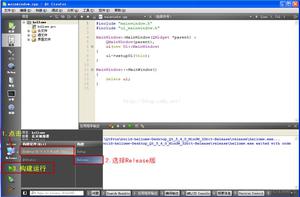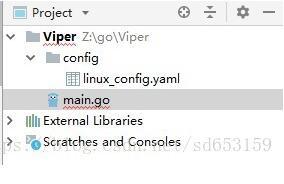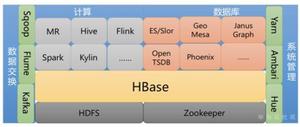工具类apachecommons常用工具类

1、ArrayUtils
public class TestMain { public static void main(String[] args) {
int[] nums1 = { 1, 2, 3, 4, 5, 6 };
// 通过常量创建新数组
int[] nums2 = ArrayUtils.EMPTY_INT_ARRAY;
// 比较两个数组是否相等
ArrayUtils.isEquals(nums1, nums2);
// 输出数组,第二参数为数组为空时代替输出
ArrayUtils.toString(nums1, "array is null");
// 克隆新数组,注意此拷贝为深拷贝
int[] nums3 = ArrayUtils.clone(nums1);
// 截取数组
ArrayUtils.subarray(nums1, 1, 2);
// 判断两个数组长度是否相等
ArrayUtils.isSameLength(nums1, nums2);
// 判断两个数组类型是否相等,注意int和Integer比较时不相等
ArrayUtils.isSameType(nums1, nums2);
// 反转数组
ArrayUtils.reverse(nums1);
// 查找数组元素位置
ArrayUtils.indexOf(nums1, 5);
// 查找数组元素最后出现位置
ArrayUtils.lastIndexOf(nums1, 4);
// 查找元素是否存在数组中
ArrayUtils.contains(nums1, 2);
// 将基本数组类型转为包装类型
Integer[] nums4 = ArrayUtils.toObject(nums1);
// 判断是否为空,length=0或null都属于
ArrayUtils.isEmpty(nums1);
// 并集操作,合并数组
ArrayUtils.addAll(nums1, nums2);
// 增加元素,在下标5中插入10,注意此处返回是新数组
ArrayUtils.add(nums1, 5, 1111);
// 删除指定位置元素,注意返回新数组,删除元素后面的元素会前移,保持数组有序
ArrayUtils.remove(nums1, 5);
// 删除数组中值为10的元素,以值计算不以下标
ArrayUtils.removeElement(nums1, 10);
}
}
2、ClassUtils
public class TestMain {
public static void main(String[] args) {
// 获取Test类所有实现的接口
ClassUtils.getAllInterfaces(Test.class);
// 获取Test类所有父类
ClassUtils.getAllSuperclasses(Test.class);
// 获取Test类所在的包名
ClassUtils.getPackageName(Test.class);
// 获取Test类简单类名
ClassUtils.getShortClassName(Test.class);
// 判断是否可以转型
ClassUtils.isAssignable(Test.class, Object.class);
// 判断是否有内部类
ClassUtils.isInnerClass(Test.class);
}
}
3、ConstructorUtils
public class TestMain {
public static void main(String[] args) {
// 获取参数为String的构造函数
ConstructorUtils.getAccessibleConstructor(Test.class, String.class);
// 执行参数为String的构造函数
Test test = (Test) ConstructorUtils.invokeConstructor(Test.class,
"Hello");
}
}
4、MethodUtils
public static void main(String[] args) throws NoSuchMethodException,
IllegalAccessException, InvocationTargetException {
// 调用无参方法
Test test = new Test();
MethodUtils.invokeMethod(test, "publicHello", null);
// 调用一参方法
MethodUtils.invokeMethod(test, "publicHello", "Hello");
// 调用多参方法
MethodUtils.invokeMethod(test, "publicHello", new Object[] { "100",
new Integer(10) });
// 调用静态方法
MethodUtils.invokeStaticMethod(Test.class, "staticHello", null);
}
5、FieldUtils
public class TestMain {
public static void main(String[] args) throws IllegalAccessException {
Test test = new Test("1", "Ray", "hello");
// 以下两个方法完全一样,都能获取共有或私有变量,因为第三个参数都设置了不检查
FieldUtils.getDeclaredField(Test.class, "username", true);
FieldUtils.getField(Test.class, "username", true);
// 读取私有或公共变量的值
FieldUtils.readField(test, "username", true);
// 读取静态变量
FieldUtils.readStaticField(Test.class, "STATIC_FIELD");
// 写入私有或共有变量
FieldUtils.writeField(test, "username", "RayRay", true);
// 写入静态变量
FieldUtils.writeStaticField(Test.class, "STATIC_FIELD", "static_value");
}
}
6、NumberUtils
public class TestMain {
public static void main(String[] args) throws IllegalAccessException {
String str = "12.7";
/*
* org.apache.commons.lang.NumberUtils已经被弃用,
* 注意要引入org.apache.commons.lang.math.NumberUtils
*/
// 判断字符串是否为整数
NumberUtils.isDigits(str);
// 判断字符串是否为数字
NumberUtils.isNumber(str);
// 获取参数中最大的值,支持传入数组
NumberUtils.max(10, 20, 30);
// 获取参数中最小的值,支持传入数组
NumberUtils.min(10, 20, 30);
// 将字符串转换为int类型,支持float,long,short等数值类型
NumberUtils.toInt(str);
// 通过字符串创建BigDecimal类型 ,支持int,float,long等数值
NumberUtils.createBigDecimal(str);
/*
* RandomUtils帮助我们产生随机数,不止是数字类型 ,
* 连boolean类型都可以通过RandomUtils产生
*/
RandomUtils.nextBoolean();
RandomUtils.nextDouble();
RandomUtils.nextLong();
// 注意这里传入的参数不是随机种子,而是在0~1000之间产生一位随机数
RandomUtils.nextInt(1000);
}
}
7、StringUtils
public class TestMain {
public static void main(String[] args) throws IllegalAccessException {
String str = "Hello World";
/*
* 由于StringUtils拥有100+的方法,笔者不逐一列举用法,
* 只列举笔者认为常用的或笔者使用过的
*/
// isEmpty和isBlank的区别在于isEmpty不会忽略空格,
// " "<--对于这样的字符串isEmpty会认为不是空,
// 而isBlank会认为是空,isBlank更常用
StringUtils.isEmpty(str);
StringUtils.isNotEmpty(str);
StringUtils.isBlank(str);
StringUtils.isNotBlank(str);
// strip --> 去除两端的aa
// stripStart --> 去除开始位置的hell
// stripEnd --> 去除结尾位置的orld
StringUtils.strip(str, "aa");
StringUtils.stripStart(str, "hell");
StringUtils.stripEnd(str, "orld");
// 返回字符串在第三次出现A的位置
StringUtils.ordinalIndexOf(str, "A", 3);
// 获取str 开始为hello结尾为orld中间的字符串
// 注意此方法返回字符串 -->substringBetween
// 注意此方法返回字符串数组(多了个s) --> substringsBetween
StringUtils.substringBetween(str, "hell", "orld");
StringUtils.substringsBetween(str, "hell", "orld");
// 重复字符串,第二种重载形式为在重复中用hahah拼接
StringUtils.repeat(str, 3);
StringUtils.repeat(str, "hahah", 2);
// 统计参数2在字符串中出现的次数
StringUtils.countMatches(str, "l");
// 判断字符串是否全小写或大写
StringUtils.isAllLowerCase(str);
StringUtils.isAllUpperCase(str);
// isAlpha --> 全部由字母组成返回true
// isNumeric -->全部由数字组成返回true
// isAlphanumeric -->全部由字母或数字组成返回true
// isAlphaSpace -->全部由字母或空格组成返回true
// isWhitespace -->全部由空格组成返回true
StringUtils.isAlpha(str);
StringUtils.isNumeric(str);
StringUtils.isAlphanumeric(str);
StringUtils.isAlphaSpace(str);
StringUtils.isWhitespace(str);
// 缩进字符串,第二参数最低为 4,要包含...
// 现在Hello World输出为H...
StringUtils.abbreviate(str, 4);
// 首字母大写或小写
StringUtils.capitalize(str);
StringUtils.uncapitalize(str);
// 将字符串数组转变为一个字符串,通过","拼接,支持传入iterator和collection
StringUtils.join(new String[] { "Hello", "World" }, ",");
/*
* 经常性要把后台的字符串传递到前提作为html代码进行解释,
* 可以使用以下方法进行转换,以下方法输出为
* <p>Hello</p>
*/
StringEscapeUtils.escapeHtml("Hello
");
}
}
8、DateUtils and DateFormatUtils
public class TestMain {
public static void main(String[] args) throws IllegalAccessException {
Date day1 = new Date();
/*
* 由于Aache的DateUtils和DateFormatUtils并没有Joda强大,
* 所以在这里只作简单的示例
*/
// 增加一天
DateUtils.addDays(day1, 1);
// 减少一年
DateUtils.addYears(day1, -1);
// 格式化时间,第三参数为国际化,表示按美国时间显示
DateFormatUtils.format(day1, "yyyy-MM-dd", Locale.UK);
}
}
以上是 工具类apachecommons常用工具类 的全部内容, 来源链接: utcz.com/z/518200.html









